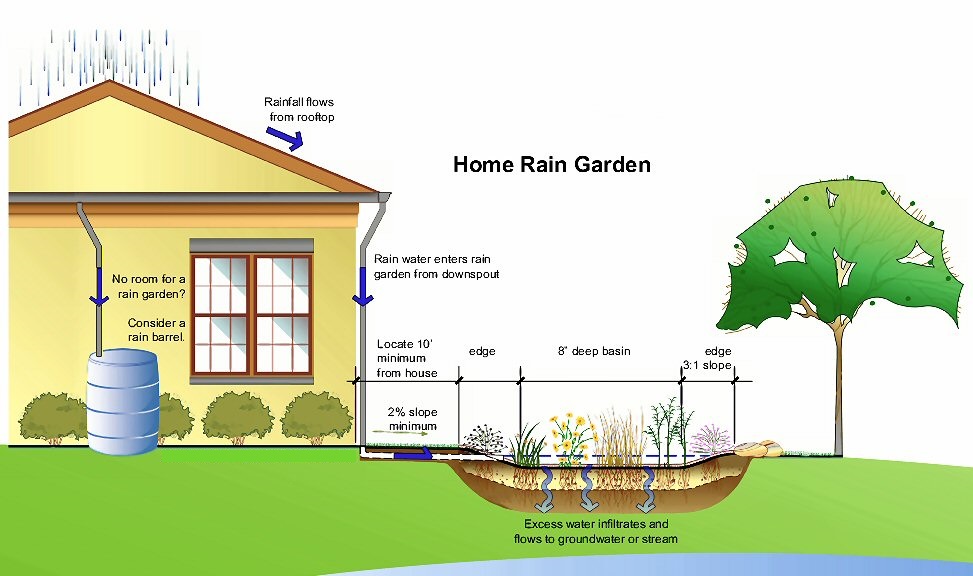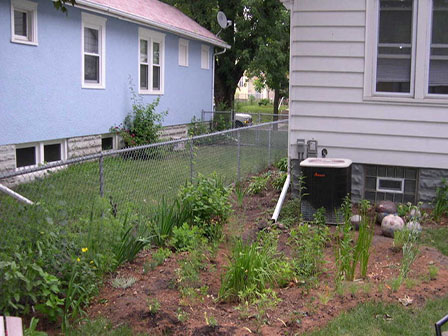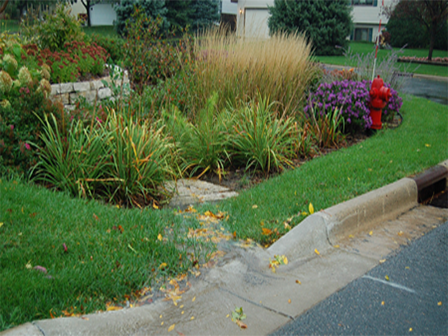Stormwater runoff is precipitation (rain or snowmelt) that flows across the land. Stormwater may infiltrate into soil, discharge directly into streams, water bodies, or drain inlets, or evaporate back into the atmosphere. In the natural environment, most precipitation is absorbed by trees and plants or permeates into the ground, which results in stable stream flows and good water quality. Things are different in the built environment. Rain that falls on a roof, driveway, patio or lawn runs off the surface more rapidly, picking up pollutants as it goes.
Why can stormwater runoff be a problem?
Poorly managed stormwater runoff can cause a host of problems. These include:
- Flooding. As stormwater runs off roofs, driveways and lawns, large volumes quickly reach streams, causing them to rise quickly and flood, instead of a natural slow and steady water rise. When more impervious surfaces exist, flooding occurs more rapidly and can be more severe, resulting in damage to property and people.
- Pollution. Stormwater running over roofs, driveways, roads and lawns will pick up pollutants such as oil, fertilizers, pesticides, dirt/sediment, trash, and animal waste. These pollutants “hitch a ride” with the stormwater and flow untreated into local streams, polluting our waters.
- Stream Bank Erosion. When stormwater flows into streams at unnaturally high volumes and speeds, the power of these flows can cause severe stream bank erosion. Eroding banks can eat away at streamside property, create dangerous situations, and damage natural habitat for fish and other aquatic life. This erosion is another source of sediment pollution in streams.
What can I do to help?
As a homeowner, you can help avoid the problems associated with stormwater runoff by:
- reducing impervious areas so that the rain soaks into the ground
- planting native trees and plants which help infiltrate stormwater and increase evaporation and transpiration
- follow lawn care practices
- managing stormwater on-site with rain gardens, rain barrels and similar practices
- doing many small things, you have a big impact on improving stormwater managemen
Stormwater Assessments
A rain garden is a planted depression or a hole that allows rainwater runoff from impervious urban areas, like roofs, driveways, walkways, parking lots, and compacted lawn areas, the opportunity to be absorbed. This reduces rain runoff by allowing stormwater to soak into the ground (as opposed to flowing into storm drains and surface waters which causes erosion, water pollution, flooding, and diminished groundwater). They should be designed for specific soils and climates. The purpose of a rain garden is to improve water quality in nearby bodies of water and to ensure that rainwater becomes available for plants as groundwater rather than being sent through stormwater drains straight out to sea. Rain gardens can cut down on the amount of pollution reaching creeks and streams by up to 30%.




 218-326-5573
218-326-5573



